by Klaus Schroiff, published July 2019
Introduction
If you like (classic-)cars you may know the statement that there’s no substitution for engine displacement but more displacement. It is quite similar with lenses actually – there’s no substitution for speed but more speed – and the fastest lenses around are usually in the f/1.2-f/1.4 range. So in the context of this review – meet the Sony FE 85mm f/1.4 GM – Sony’s professional-grade medium-tele prime lens. As the name implies, it is a member of the “GM” (G-Master) lineup thus it’s among the best of what Sony is offering today. Of course, this also means that you’ll suffer quite a bit when investing in such a lens. The typical price-tag hovers around the 1700USD/EUR mark. An 85mm f/1.4 is flexible regarding its application but it is most popular among portrait-/wedding photographers and wherever you’d like to isolate your main subject from its surroundings via a shallow depth-of-field.
In order to achieve the best possible optical results, Sony went a couple of extra miles with this lens. The optical design uses an aspherical element. This is often not a good idea when it comes to the rendition of the bokeh (out-of-focus blur) because it tends to have negative effects on out-of-focus highlights. However, Sony polished the element to a 0.01 micron surface precision in order to make sure that the highlights are as smooth as possible. The aperture features no less than 11 rounded elements and “Nano AR” coating is meant to minimize flare. Of course, the proof is in the pudding as we’ll see later on.
The mechanical quality of the Sony FE 85mm f/1.4 GM is, of course, up to pro standards. It feels very sturdy, weather-sealed and tightly assembled. Size- and weight-wise it remains within the scope of classic 85mm f/1.4 lenses so there’s no free lunch here just because it’s a lens for a mirrorless system. The length of the lens remains constant throughout the focus range. The focus ring operates smoothly. Unlike on most Sony FE lenses, you can also control the aperture on the lens if you like. You also have the choice between a clicked or de-clicked aperture ring with the latter option targeting movie makers. A deep barrel-shaped hood is provided.

In terms of AF, Sony incorporated an RDSSM ( Ring Drive Super Sonic wave Motor ) and a secondary sensor to ensure accurate focusing. In real life, the lens isn’t all that different compared to other 85mm f/1.4 lenses. Reads – the AF is reasonably fast but not really snappy. And whether you hit or miss your focus depends probably more on the camera than the lens. During the field trip, we had several misses because the AF sensor is just too coarse for the shallow depth-of-field at f/1.4 in close focus scenes. Manual focusing is very precise and much better than what we’ve seen in most other “by-wire” systems. An image stabilizer is, unfortunately, not provided but most full-format Sony cameras feature in-body stabilization anyway.
| Specifications | |
|---|---|
| Optical construction | 11 elements in 8 groups including 1xXA & 3xED elements |
| Number of aperture blades | 11 (rounded) |
| min. focus distance | 0.8m (max. magnification ratio 1:8.3) |
| Dimensions | 89.5×107.5mm |
| Weight | 820g |
| Filter size | 77mm |
| Hood | barrel-shaped (bayonet mount, supplied) |
| Other features | De-click button, Nano AR Coating, focus-hold button, dust and moisture resistant |
| Mount | Sony FE |
Distortion
Normally – thus with activated image auto-correction – you won’t really notice any image distortions. However, that doesn’t mean that the Sony FE 85mm f/1.4 GM is a full corrected lens. In RAW mode, you can spot a pincushion distortion of ~1.3% which is fairly high for a prime lens.
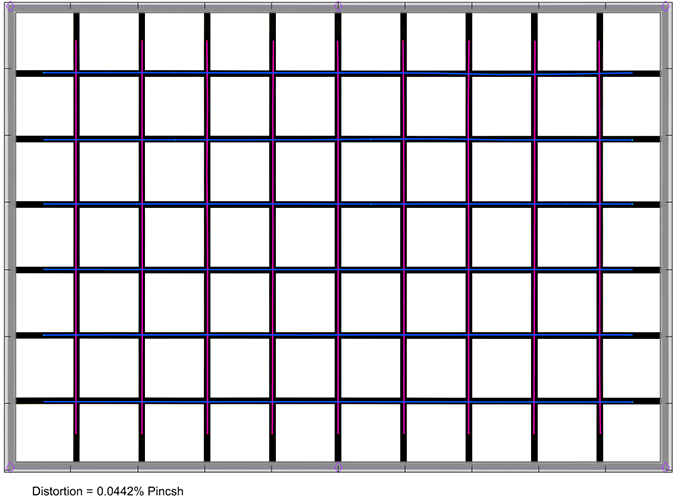
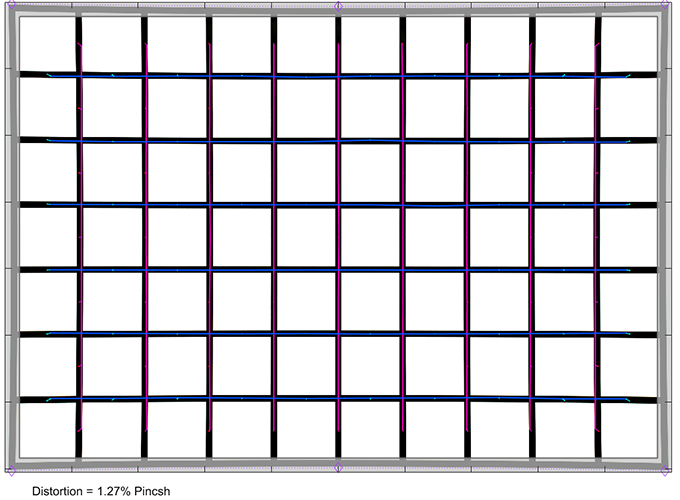
Vignetting
Image auto-correction also comes handy with respect to vignetting. The RAW image reveals a light fall-off of 2.4EV (f-stops) at f/1.4. While not unusual for such a full-format lens it will be visible in many scenes. Please note, however, that some photographers actually prefer to have some vignetting at this setting anyway. Stopping down to f/2.8 solves most of the issue and it’s gone by most standards from f/5.6 onward. If you don’t want to bother the image auto-correction decreases the vignetting to 1EV (f-stop) which is quite acceptable.

MTF (resolution)
The resolution characteristic of the Sony FE 85mm f/1.4 GM is impressive – as you might expect. The image center is already very good at f/1.4 and the outer image region is on a good level. Stopping down to f/2 boosts the center to an excellent and the borders/corners are also lifted. The peak performance is reached around f/4 with an outstanding center and very-good to excellent levels at the border/corner. Beyond diffraction is limiting the quality. This remains pretty much irrelevant till f/8 but it’s getting more noticeable from f/11 onwards.
The field curvature is minimal. The centering quality of the tested sample was only Okay with a slight tilt of the focus plane at f/1.4.
Please note that the MTF results are not directly comparable across the different systems!
Below is a simplified summary of the formal findings. The chart shows line widths per picture height (LW/PH) which can be taken as a measure for sharpness. If you want to know more about the MTF50 figures you may check out the corresponding Imatest Explanations

Chromatic Aberrations (CAs)
Once again – on Sony cameras, you don’t really have to worry about chromatic aberrations due to image auto-correction. However, even if you prefer to disable this for whatever reason, the CAs are very low at around 0.6px on the average at the image borders.

Bokeh
You do, of course, expect such a lens to deliver a high level of sharpness but the real reason for investing that much money is the shallow depth-of-field potential. And the bokeh (rendition of the out-of-focus blur) should better be good. The Sony lens does not disappoint us in this respect.
The background bokeh is truly silky and the foreground is just slightly less perfect as you can see below.

Highlights are also rendered very nicely. Short of STF lenses, this is about as good as it gets from a conventional lens! The Sony lens also features no less than 11(!) aperture blades thus even if you stop down a little, the circular aperture shape remains intact.

Image highlights aren’t quite as nicely circular in the image corners though. Our test scene below illustrates the usual “cat-eye” rendering and it never really dissolves when stopping down. This is typical for pretty much all lenses though. Technically it is a vignetting effect due to the limited diameter of the lens barrel.


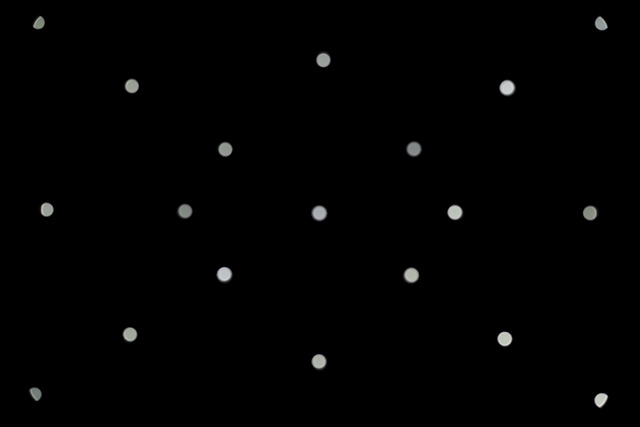
Bokeh Fringing / LoCA
Bokeh fringing describes chromatic aberration on the Z-axis with greenish halos beyond the focus point and purple halos in front. There are lenses capable of correcting the issue but the Sony lens does not qualify as you can see below. The fringing is easily visible at f/1.4 and traces are visible till f/2.8. This is usually no drama but it is an imperfection nonetheless.
If you look closer you may spot that the focus point shifts towards the back when stopping down – these are so-called “Residual Spherical Aberrations”. On DSLRs, this would be an issue but Sony cameras auto-focus at stopped-down aperture so usually you won’t notice this in real life. You may also spot that the lens is fairly soft near this minimum focus distance albeit that’s not surprising – this applies to many lenses.
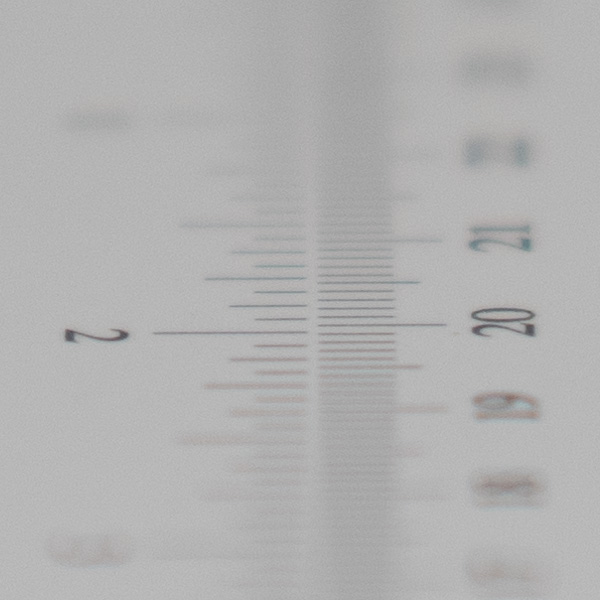
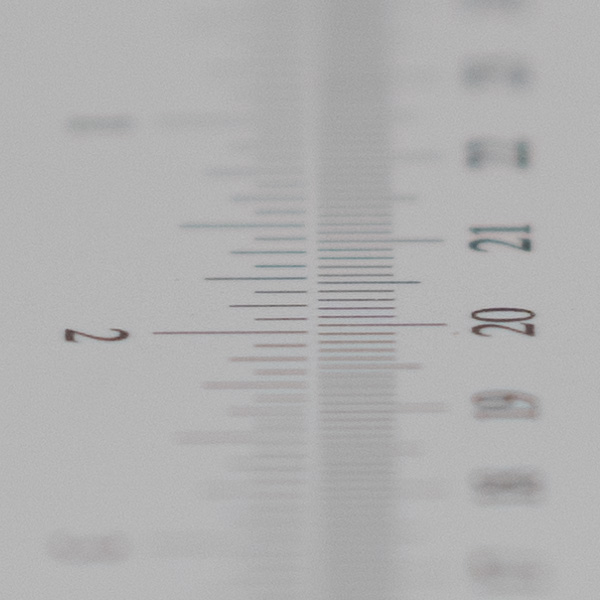

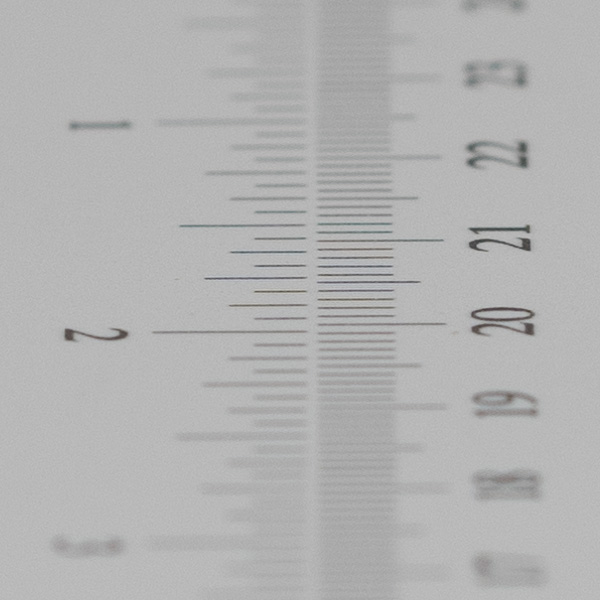
Sample Images
Competition
There is a variety of 85mm lenses available for Sony FE mount. The most obvious direct competitors of the Sony GM lens (to the left) are the Samyang 85mm f/1.4 AF FE (center) and the Sigma 85mm f/1.4 ART. If you are on a budget, the Samyang is a rather obvious alternative at less than half the price. Don’t expect comparable quality though but you won’t really notice too much of a difference on lower megapixel bodies. It is, however, substantially more light-weight and a bit smaller. In between in the Sigma 85mm f/1.4 ART which IS on the same level optically but … look at that lens – it’s huge. Essentially Sigma took their DSLR lens and extended it to bridge the distance to the Sony mount. It almost looks comical but if you don’t mind the size and looks – why not?
Most of us don’t really REQUIRE an f/1.4 max aperture thus if you fall into that category (as well), you may also consider the Zeiss Batis 85mm f/1.8 or even the Sony FE 85mm f/1.8. While they have a tad less depth-of-field potential they are pretty much up there in terms of image quality.

Visual comparison courtesy of camerasize.com.
The Sony FE 85mm f/1.4 GM is an excellent example of what a lens should look like in this class - albeit it is still not perfect. It is very sharp at f/1.4 and outstanding when stopped down to medium aperture settings. Lateral CAs are very low even without image auto-correction. The quality of the bokeh is among the best that what we have seen in this lens class. The background bokeh is especially silky. It is a bit unfortunate that bokeh fringing is not controlled. To be fair though - very few lenses are capable of doing that (the Zeiss Otus 85mm f/1.4 for instance). The RAW vignetting is high at f/1.4 and the amount of pincushion distortion is also a bit more than expected. However, once again, image auto-correction comes to the rescue so you won't really notice this in processed images.
The build quality is superb thanks to high-quality materials, weather-sealing, and smooth control rings. A specialty is the dedicated aperture ring so you can choose whether to use this one or the dial on the camera. The aperture ring can also be de-clicked for a smooth adjustment when shooting video. The AF is fast and silent but it's no speed demon in this respect.
Overall, if you are in need for the extra speed and/or just want the best native AF lens in this class, the Sony FE 85mm f/1.4 GM - highly recommended!
-
Optical Quality
-
Build Quality
-
Price / Performance


